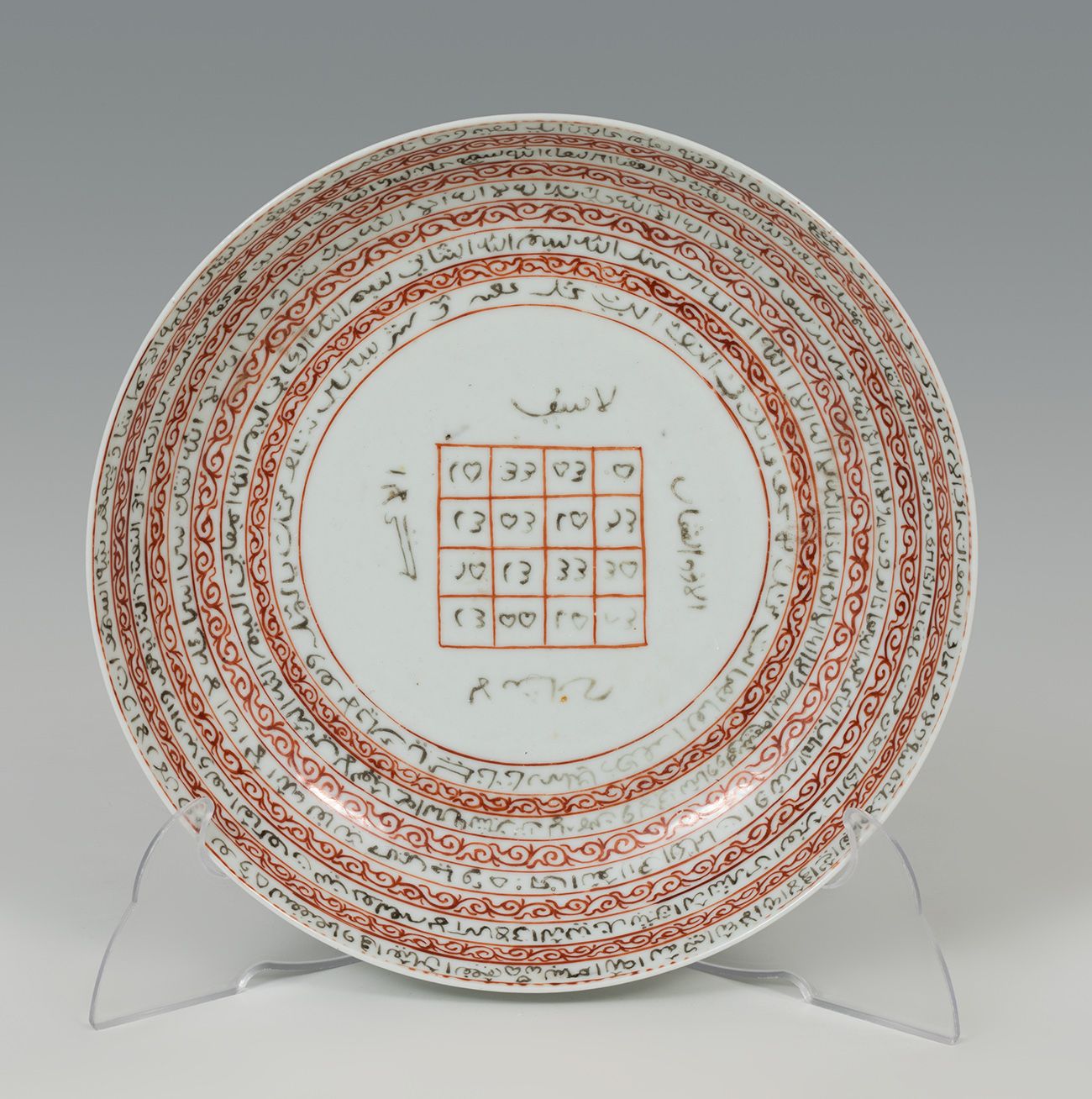Description
Dish; China, Quing Dynasty, 1644-1911. Porcelain with enamelled decoration. The glaze is slightly worn. Measurements: 4 x 21 cm (diameter). Porcelain dish with enamelled decoration, structured on the basis of concentric bands with inscriptions in Arabic and plant motifs. In the centre, a square-shaped cartouche contains numerous Arabic inscriptions. Such pieces were common as export wares. The Ching or Qing Dynasty, also known as the Manchu Dynasty, was the last of the Chinese imperial dynasties. Founded in present-day northeastern China by the Manchu clan in 1644, its rule ended with the abdication of the last Emperor in 1912 by the Xinhai Revolution and the establishment of the Republic of China, all the while maintaining the capital at Beijing. In general, traditional art forms flourished in many different and varied levels and formats, thanks to a highly educated upper class, a thriving publishing industry for books, pamphlets, etc., truly prosperous cities, and the Confucian emphasis on cultivating the mind. While the Emperors themselves were often outstanding artists (especially in painting), the best work was done by scholars and the urban elite in calligraphy and painting, both areas of great interest to the court. Even cuisine was elevated as a source of cultural pride in this period, taking elements from the past and working on them to reach new heights.
39
Dish; China, Quing Dynasty, 1644-1911. Porcelain with enamelled decoration. The glaze is slightly worn. Measurements: 4 x 21 cm (diameter). Porcelain dish with enamelled decoration, structured on the basis of concentric bands with inscriptions in Arabic and plant motifs. In the centre, a square-shaped cartouche contains numerous Arabic inscriptions. Such pieces were common as export wares. The Ching or Qing Dynasty, also known as the Manchu Dynasty, was the last of the Chinese imperial dynasties. Founded in present-day northeastern China by the Manchu clan in 1644, its rule ended with the abdication of the last Emperor in 1912 by the Xinhai Revolution and the establishment of the Republic of China, all the while maintaining the capital at Beijing. In general, traditional art forms flourished in many different and varied levels and formats, thanks to a highly educated upper class, a thriving publishing industry for books, pamphlets, etc., truly prosperous cities, and the Confucian emphasis on cultivating the mind. While the Emperors themselves were often outstanding artists (especially in painting), the best work was done by scholars and the urban elite in calligraphy and painting, both areas of great interest to the court. Even cuisine was elevated as a source of cultural pride in this period, taking elements from the past and working on them to reach new heights.
